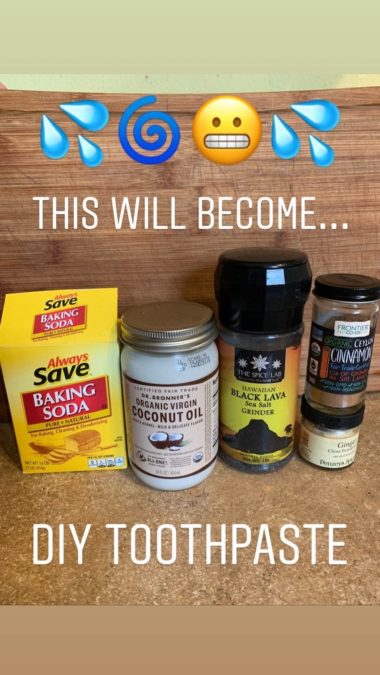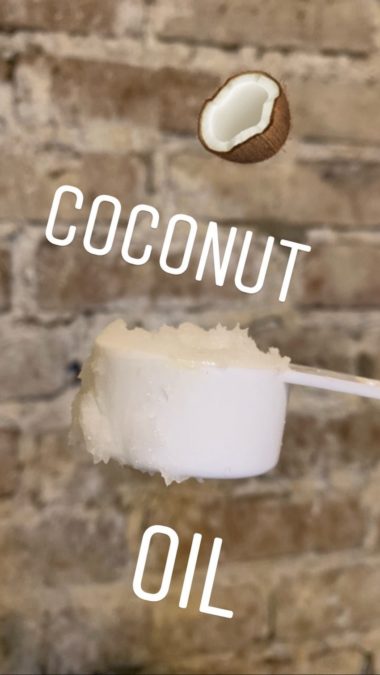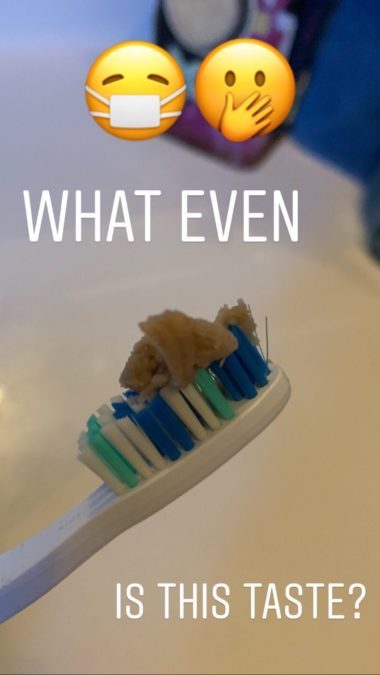I Tried Making DIY Toothpaste Using Only Ingredients I Already Had In My Kitchen
Get the recipe and try it out for yourself!
I don’t know about you, but toothpaste is one home health product that I never really think twice about.
Every few months, I buy an affordable tube that says promising things on the package, like “whitening” or “plaque control,” and I use it twice a day.
So when I first decided to make my own DIY toothpaste, it was out of curiosity and existential boredom more than anything else. My regular toothpaste works just fine, but… what would DIY toothpaste even be made of? Would it work? Would it taste horrible? I wanted to know these things (so that I could write about them and tell you all), but I had no idea what to expect.
Once I went down the rabbit hole of information about toothpaste on the internet, though, I discovered a lot more than I bargained for (as usually happens with rabbit holes on the internet).
First off, regular toothpaste contains a number of potentially harmful ingredients, like sweeteners, sulfates, and artificial dyes. I already knew this, but I’d buried it deep in my mind because, well, one can only worry about so many things in a day.
Many DIY recipes also contain harmful or just plain useless ingredients, however. And I found at least one source claiming that, according to some dentists, you don’t even need toothpaste at all to get your mouth clean, which blew my mind.
At that point, I decided to come right back out of the rabbit hole and just make a DIY toothpaste and see how well it worked for me. I used a recipe that doesn’t contain any sweeteners or essential oils, and I spent $0 on it because I used only products that I had around the house already.
And then I put the toothpaste on my toothbrush, and I used it twice a day. Well, I tried, anyway.
If nothing else, this experiment relieved my existential boredom for about 30 minutes. If you, too, would like to experiment with your teeth to avoid whatever else you should be doing, read on!

The purpose of toothpaste is mainly to act as an abrasive to help your toothbrush remove all the gunk and film off your teeth and gums. Ingredients like baking soda, salt, cinnamon, and ginger powder all help with this. In addition, the baking soda neutralizes the acidity of the mouth. Coconut oil, on the other hand, is excellent for dental health because it controls bad breath, prevents cavities, and whitens teeth.
Lots of sources recommend adding 15 to 20 drops of peppermint or cinnamon essential oil, and the main reason I didn’t do so is that peppermint is obviously the superior flavor and I didn’t have any peppermint oil. Also, one source says that essential oils kill too much of the friendly bacteria in your mouth, which can lead to problems.
Stevia, xylitol, calcium, magnesium, and trace minerals are other common ingredients in DIY toothpaste that I did not use. The latter three are useful for remineralizing your teeth if you’re not getting enough minerals from your water.
Also, I really wanted to add bentonite clay, which is in many DIY toothpaste recipes. It helps to remove toxins.

Alas, this brand of clay is not food-grade, so it’s not safe for internal use. I’m pointing it out so you don’t make that mistake!
Step One: Blend Dry Ingredients

First, I measured ½ tsp. salt. Any unprocessed salt will do. I used Hawaiian black salt because that’s what I have in my kitchen right now.
I also added ½ tsp. cinnamon powder.

I also added 1½ tsps. ginger powder.

Then, I measured out ¼ cup of baking soda.

I poured all of these powders into a bowl.

I mixed them up with a spoon until they were well-combined, making sure to break up any chunks of baking soda.
Step Two: Melt Coconut Oil

Then I put ⅜ cup coconut oil into a glass Pyrex cup and put it in the microwave for about 30 seconds or so, until the oil was mostly melted.

You can also use a double boiler, but this was my lazy method of melting the oil.
(If your coconut oil is already liquid, I’m jealous of how warm your house must be, and also you don’t need to heat it up at all.)
Step Three: Combine All Ingredients

I added all of the ingredients to a blender. I attempted to blend, but… it didn’t work!
My blender was too big, and the ingredients were too small. The mixture wasn’t even high enough to reach the blades. Whoops!
The good news: I discovered that the blender was pretty much unnecessary. You can just combine the ingredients with a spoon.
The bad news: I had to scrape my mixture back out of the blender, which was a huge pain because it’s sticky. Also, the chunks of salt never got blended into a smaller, grittier consistency, which didn’t make much of a taste difference, but it definitely was not the intention. I recommend grinding the salt first if you don’t use a blender.
Anyhoo, on to the very last step!
Step Four: Put In Container

Dispense the toothpaste into a glass or plastic resealable container. You can even buy empty squeeze tubes online if you want that real ~toothpaste~ effect.
The Test

This DIY toothpaste has a nice texture — creamy but still firm, like a toothpaste should be. It smells like cinnamon and ginger and coconut, so it’s not offensive at all, but it’s definitely a new toothpaste scent for me.
I put a modest amount of the toothpaste on my brush, then went to work.
I was immediately put off by the taste. It mostly tastes like… well, baking soda and salt and coconut oil, which apparently is a disgusting taste, at least to me. My mouth did feel clean afterward, but I don’t think I could stand having this taste in my mouth for four minutes per day. I only managed to use it the one time.
However, my partner tried the toothpaste right after me and was not offended by the taste whatsoever. In fact, my partner called it “refreshing” and said it made the mouth feel “really clean.” Imagine that!
Clearly, it’s a matter of personal preference. I learned that, yes, DIY toothpaste tastes horrible, but only to some folks. And also, yes, it works pretty much the same as the regular kind, at least for regular brushing purposes.
Final Thoughts

I hate this toothpaste. I was going to throw it out until my partner tried it and liked it, so I put it in the bottom drawer in my bathroom, where it belongs.
If you’ve tried using a baking soda toothpaste before and didn’t mind the sensation, this DIY toothpaste will probably suit you just fine. (And in that case, know that it will keep on the shelf for a while, but not long-term since it has no preservatives. Also, the consistency can vary a bit depending on the temperature of where you store it!)
And if you’re like me, well. Maybe another recipe — one with a completely different taste??? — would work better.
SKM: below-content placeholderWhizzco for CRH

